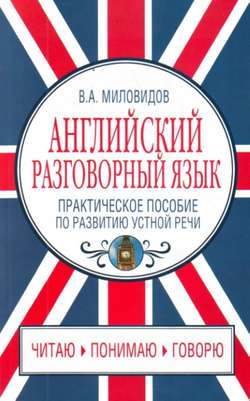Читать книгу Английский разговорный язык. Практическое пособие по развитию устной речи - В. А. Миловидов - Страница 21
На сайте Литреса книга снята с продажи.
2. Экономические учения
(Economics)
Neoclassical Economics
ОглавлениеNeoclassical economics is the mainstream economics today.
In the nineteenth century, most Western economists accepted what is now called classical theories of value and distribution. According to the classical value theory the value of a watch, for example, depended on the costs involved in producing that watch. The aggregate product of an economy was supposed to be distributed among different people or different social groups according to the costs borne by those people and groups in producing this product. This classical views had their roots in the ideas of Adam Smith, David Ricardo, John Stuart Mill and Karl Marx.
In practice these theories did not always work, and it was noticed that prices in the market did not necessarily reflect the value so described, as people were often ready to pay more than an object was supposed to cost. So, the classical theory of value, according to which value was a property of an product, was gradually substituted by theories in which value was reflecting the relationship between the product and the person purchasing the product. This two-fold relationship later came to be called supply and demand. This was a real breakthrough, and it is known now as the Marginal Revolution in economics. The theories which developed from these ideas later came to be called neoclassical economics.
The framework of the Marginal Revolution and the neoclassical economics is as follows. Individuals, both buyers and producers, make choices at the margin. Buyers tend to maximize their gains from getting goods up to a certain point where what they gain from an extra unit is balanced by what they give up to obtain it. Thus they maximize and optimize «utility» – the satisfaction which they get while consuming goods and services. In the same way workers provide labour to employers by balancing the gains from offering the marginal unit of their services (the wage they are supposed to get) with the the loss of leisure.
In the same way producers maximize profits by balancing the revenue they generate with the cost of producing the marginal units of a product. They also hire workers up to the point where the cost of additional hands is balanced by the value of output that those hands might manufacture.
So, the neoclassical theories take economic agents into consideration. These agents optimize their gains against all relevant constraints. In this context value results from the collision of unlimited desires with constraints, or scarcity. The decision problems are reconciled in markets, prices being the signals whether the conflicting desires can be reconciled.
At some price of refrigerators, for example, I want to buy a new refrigerator. At that same price others may also want to buy refrigerators. But producers may not want to manufacture as many refrigerators as all buyers want. So, this may lead us to «bid up» the price of refrigerators, ousting out some buyers and encouraging some producers to produce more of the product we want. The price changing, the imbalance between buy orders and sell orders is reduced. This is how optimization under constraint and market interdependence lead to an economic equilibrium. This is the neoclassical outlook.
Слова и выражения:
accept – принимать
breakthrough – прорыв, открытие
collision – столкновение
constraint – ограничение, сдерживающий фактор
desire – желание
equilibrium – равновесие
framework – конструкция, структура
gain – приобретение; приобретать
gradually – постепенно
imbalance – дисбаланс
interdependence – взаимозависимость
involve – включать в себя, вовлекать, втягивать
leisure – досуг, отдых
margin – предел, маржа
marginal – предельный, маргинальный
maximize – увеличивать
neoclassical – неоклассический
optimize – оптимизировать
outlook – взгляд, мировоззрение
property – свойство, качество
reconcile – примирять
relevant – соответствующий, соотносимый
scarcity – недостаток
signal – сигнал
substitute – заменять, подменять
tend – стремиться, следовать тенденции, устанавливать тенденцию
utility – полезность, практичность, выгодность
value theory – теория стоимости
two-fold – двусторонний
came to be called – стал называться
Marginal Revolution – Маржиналистская Революция (маржинализм – теория предельной полезности и производительности)
extra unit – дополнительная единица (продукции)
give up – оставлять, бросать
take into consideration – принимать во внимание
economic agents – участники экономической жизни, экономических процессов
in this context – в данном контексте
bid up – набавлять цену
oust out – вытеснять
buy order – заказ на продажу
sell order – заказ на покупку
Exercise 9
Answer the questions:
1. What view did the economists in the XIXth century accept?
2. What did the value of a product depend on, in accord with the classical value theory?
3. How were products distributed, according to this theory?
4. Whose ideas did the classical theory have roots in?
5. Why didn't the classical theory work in practice?
6. What theories were the classical theories substituted by?
7. What is value, in the neoclassical view?
8. Where do buyers and sellers make their choices, according to the neoclassical view?
9. What is «utility», in the neoclassical sense of the word?
10. Who do neoclassical theories take into consideration?
